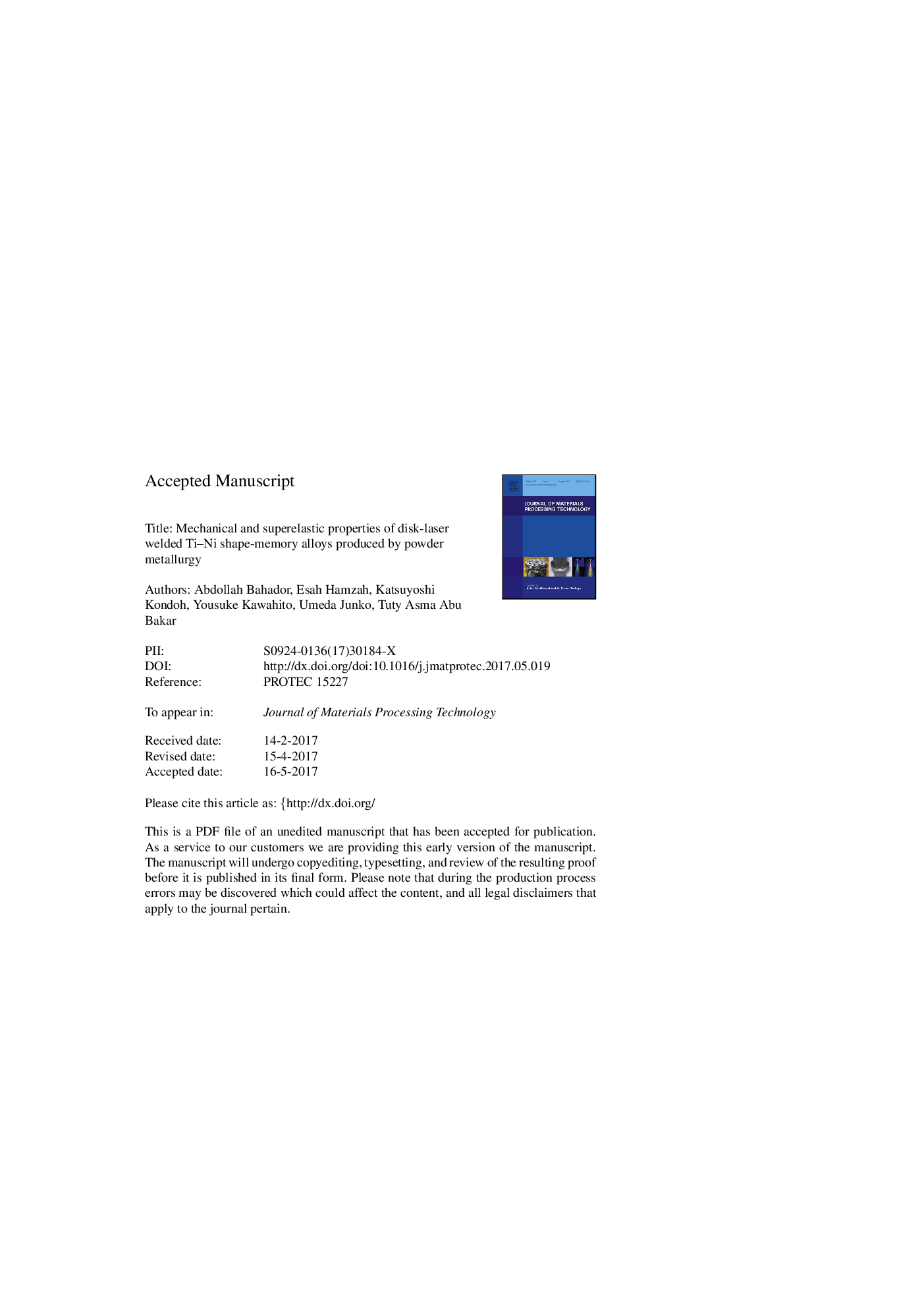| Article ID | Journal | Published Year | Pages | File Type |
|---|---|---|---|---|
| 5017998 | Journal of Materials Processing Technology | 2017 | 18 Pages |
Abstract
Tensile test showed that the strength of the welded joints of powder metallurgy Ti-51%atNi shape-memory alloys (SMAs) decreases after disk-laser welding due to the presence of pores and columnar structure in the fusion zone. There was a reduction in the superelastic behavior of the welded joints compared to the base metal. Superelastic properties of specimen LW1 (with welding speed of 6 m/min and laser power input of 3 kW) were close to the base metal after loading and unloading at room temperature. Welded specimens, which were subjected to solution treatment at 1000 °C followed by aging at 500 °C showed an increment in superelasticity properties. Superelasticity improved significantly after heat treatment in all the welded joints except LW2 (with welding speed of 7.5 m/min and laser power input of 3 kW), because it contained high amounts of porosity in the fusion zone. LW1 exhibited the best properties after heat treatment with superelasticity strain increasing up to 7%, which was higher than the base metal. Differential scanning calorimetry (DSC) investigations showed that heat-treated weld seams had similar phase transformation peaks of martensite, austenite, and R phases to the base metal, which may be due to the recovering of Ti3Ni4 precipitates.
Related Topics
Physical Sciences and Engineering
Engineering
Industrial and Manufacturing Engineering
Authors
Abdollah Bahador, Esah Hamzah, Katsuyoshi Kondoh, Yousuke Kawahito, Umeda Junko, Tuty Asma Abu Bakar,
